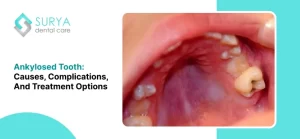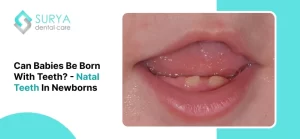Imagine stepping into your dental consultation with a vision so precise that you know exactly how your new smile will look before any work begins. Like hitting the jackpot at a casino, patients can https://winportcasino.site/ experience the excitement of seeing their dream smile come to life, thanks to Digital Smile Design. This innovative approach merges art and science to craft a personalized treatment plan that takes into account your facial features, personality, and aesthetic goals. With advanced software and high-resolution imaging, dentists can map out every aspect of your smile with unprecedented accuracy. Gone are the days of uncertainty and guesswork—each consultation becomes a collaborative experience between you and your dentist. As technology continues to evolve, Digital Smile Design is setting a new standard in cosmetic dentistry, ensuring that every patient walks away with results that exceed expectations. Patients leave the clinic feeling empowered, having participated in the design process and seen a virtual preview of their improved appearance. This level of customization and predictability is transforming patient satisfaction and elevating the entire dental experience.
Understanding Digital Smile Design
Digital Smile Design is a holistic dental planning tool that integrates photography, videography, and three-dimensional scans to create a virtual model of your teeth and gums. By analyzing the proportions of your face, lips, and teeth, the software generates a preview of your ideal smile, which can be fine-tuned in real time. Dentists use this digital blueprint to communicate treatment goals clearly and align procedural steps with patient expectations. The process begins with detailed digital records, including intraoral scans and high-definition photographs taken from multiple angles. These records are fed into specialized software that constructs a lifelike simulation of your results. Collaboration between the dentist, dental technician, and patient ensures that aesthetic preferences—such as tooth shape, size, and shade—are meticulously addressed. This previsualization eliminates guesswork, allowing both parties to agree on the final design before any physical work begins. Moreover, Digital Smile Design enhances diagnostic accuracy, revealing potential issues like asymmetries or bite misalignments that might otherwise go unnoticed. The result is a streamlined workflow, reduced chair time, and greater confidence in the final outcome.
Key Benefits of Digital Smile Design
Embracing Digital Smile Design offers numerous advantages over traditional cosmetic dentistry methods. Patients benefit from a clear, visual roadmap of their treatment, fostering trust and engagement. Dentists can plan complex procedures more efficiently, translating digital designs directly into guides for restorative work or orthodontic aligners. The technology also supports better communication with dental laboratories, ensuring that crowns, veneers, and implants perfectly match the agreed-upon design. Furthermore, this approach minimizes the risk of errors and revisions, saving time and reducing cost overruns. Because Digital Smile Design accounts for facial dynamics—such as how your lips move when you speak or smile—it delivers results that look and feel natural in everyday life. Below are some of the standout benefits:
- Predictable outcomes through virtual treatment previews
- Improved patient-dentist communication and satisfaction
- Enhanced accuracy in prosthetic fabrication
- Shorter treatment times and fewer appointments
- Customized solutions tailored to each individual’s facial features
These advantages collectively elevate the standard of care, making cosmetic dentistry more accessible and patient-friendly than ever before.
Step-by-Step Process of Digital Smile Design
The workflow for Digital Smile Design is systematic and patient-centric. Each step is designed to build upon the previous one, ensuring a cohesive and efficient treatment plan:
- Initial Assessment: Comprehensive examination and collection of digital records, including 3D scans and photos.
- Design Simulation: Use of software to draft multiple smile variations, adjusting tooth shape, alignment, and shade.
- Patient Consultation: Review of virtual designs with the patient, incorporating feedback and finalizing the plan.
- Laboratory Collaboration: Transmission of digital specs to the dental lab for fabrication of veneers, crowns, or guides.
- Clinical Execution: Implementation of the treatment using precise guides and mock-ups derived from the digital model.
- Final Evaluation: Verification of results against the original digital preview, making minor adjustments as needed.
This structured approach not only streamlines the journey from consultation to final smile but also empowers patients to make informed decisions at every stage.
Case Studies and Patient Experiences
Real-world examples demonstrate the transformative power of Digital Smile Design. Patients who once hesitated to pursue cosmetic dental work now embrace the process, armed with the confidence of knowing exactly what to expect. Dental practices report higher acceptance rates for elective procedures, attributing this to the clarity and transparency provided by digital previews. Moreover, many patients describe the experience as akin to working with an artist who paints their smile before ever picking up a brush. Such testimonials underscore the emotional and functional impact of seeing one’s future smile rendered in vivid detail. Below is a quote from a recent patient testimony:
"Thanks to Digital Smile Design, I saw my new smile on screen long before my first appointment. The precision and attention to detail were astonishing. It felt like collaborating with a high-tech designer, and the final result surpassed even my highest expectations. I couldn’t be happier with my natural-looking, confidence-boosting new smile."These success stories highlight how technology and artistry converge to create life-changing results.
Future Trends in Cosmetic Dentistry
As Digital Smile Design continues to evolve, emerging technologies promise even greater enhancements. Artificial intelligence may soon assist in predicting tissue response and long-term wear, refining designs for durability and aesthetics. Virtual reality could provide immersive previews, allowing patients to interact with their new smiles in a simulated environment before treatment begins. Additionally, advances in 3D printing are expected to shorten fabrication times, enabling same-day delivery of restorations with unparalleled accuracy. Integration with tele-dentistry platforms may facilitate remote consultations, broadening access to expert design services worldwide. Ultimately, the fusion of digital innovation and clinical expertise will drive cosmetic dentistry toward new frontiers, transforming smiles with speed, precision, and personalization. Patients can look forward to shorter treatment timelines, fewer in-office visits, and outcomes tailored to their unique facial characteristics—ushering in a new era of dental artistry and patient empowerment.






Leave a Comment